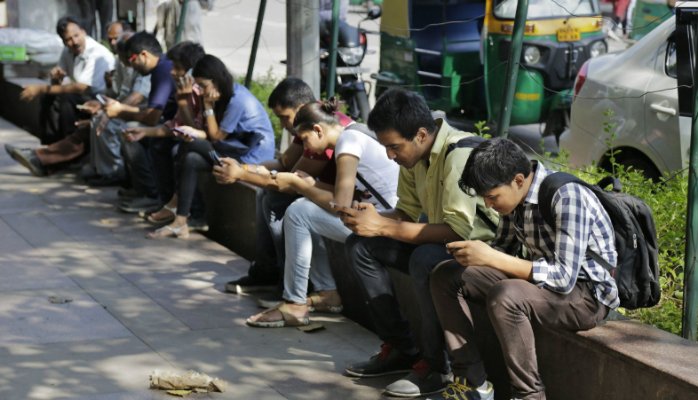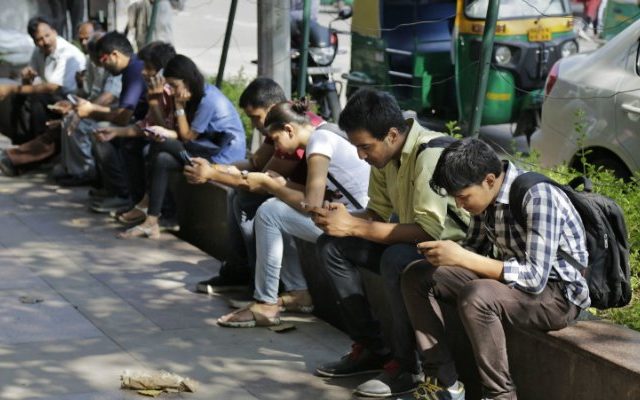Netflix has changed it for good the way people watch TV in US, they can take a fair share of credit for creating cultural gradations like binge watching, on-demand viewing, and Netflix and Cheat (watching shows without your significant other). But this is all in a country like US where the demarcation between the cable guy and broadband guy are thin. In India, there’s a wide gap in how people perceive TV and Internet, and the gap goes wider on device used to ac cess internet: PC VS mobile.
cess internet: PC VS mobile.
Notwithstanding the perception of internet and usage behaviour differently by Indians, there are over a dozen incumbent SVOD players fighting it out. Here are some more challenges that Netflix has to overcome to succeed, if not lead the market.
Can it spin the moral compass? Game of Thrones (GOT), The Walking Dead, and The Big Bang Theory are three most pirated TV series of 2015 but are alarmingly not available on Netflix India currently. Given this scenario why will a pirate torrenting content of his choice stop doing it? Can they offer content so compelling yet check off India’s definition of ‘value for money’ that will provoke second thoughts before downloading pirated content off the internet?
People are weighing the subscription fee for Netflix against their existing broadband bills, through which they are anyways getting content of their choice via torrents. Arguments on social media goes like this – “why must I pay for both data and streaming, when I can pay for data alone and download the whole file for eternity?” Looks like the force is strong with pirates.
Getting the Big Mac Index right – The pricing of Netflix in India is a literal conversion of US dollars to Rupees. Their strategy to give a month’s worth of subscription free is a great idea to get early signups and more importantly create a customer database. But the pricing by other SVOD players in India range from free/ad supported (Hotstar) to mostly freemium. Spuul at Rs. 300 per month was the highest until Netflix introduced its basic plan at Rs. 500 per month. Without a freemium or an option to watch a one-off movie or TV show, it will be interesting to see what pricing strategy Netflix will continue in India. After all, besides calibrating prices to PPP rates, fast food chain giants like KFC, Subway and McDonalds had to open veg-only outlets at some parts of India, which leads us to the next challenge.
Can it address the regional content challenge? According to Chitavan Patel, director, content acquisition at Netflix who spoke to ET said “We’re looking at a new wave of Indian independent cinema that’s really exciting us. What’s really important is, now that we’ve launched, we get to see what people are engaging with. We’ll add more of what people want to see”
Of late, a Hindi movie is a remake of a Tamil movie, which was a remake of a Telugu movie, which is mostly likely to be inspired by a Malayalam movie! (Drishyam, Bodyguard). Each region in India is so diverse and different that a dubbed or sub-tilted movie just won’t do. This diversity is a double edged sword, for filmmakers this unlocks potential to repackage one great story in multiple languages but for Netflix it could be a griming task to appeal to the billion people nation fragmented by language. Netflix may be excited about Independent (indie) cinema, but are the audience excited enough to pay?
Providing uniform user experience – ‘Hey girl, do you wanna Netflix and buffer?’ tweeted @Cowtuk soon after Netflix announced its entry to India among other countries at CES 2016. This ingenious tweet taking a jibe the infamous innuendo called ‘Netflix and Chill’ aptly describes the state of internet connection in India.
Netflix comes with built-in adaptive streaming technology but India has an average broadband speed of 2mbps (one of the slowest in APAC). Mobile internet is no different either, India’s telecom authority TRAI is trying fix call drop problems, let alone faster and better data connectivity. While Netflix can do very little to control the telecom ecosystem, providing an unbuffered user experience on mobile has to be a priority to survive. Even the likes of YouTube had to come up with offline viewing features for markets like India to keep the usage going.
It’s not a minefield – yup, you don’t call it as a surprise when bunch of competitors are waiting in plain sight to have flank attack on each other and new entrants. Telecos who can bundle data plans with VOD subscription (Wynk, JIO) are ones who can elevate themselves to a higher position and take aim. It will be interesting to see how this war fans out and who’ll remain to tell the tale.
Will the state crash Netflix’s party? Uber and the likes had a stumbling block when RBI mandated to have two factor authentication for online transactions, a mandate that Netflix isn’t yet following; while this isn’t a great limiting factor, there something more that can shake the stake if censor board interferes. US content post Indian level of censor is a blunt knife that can’t even cut butter.
Godspeed Netflix, and thanks for the free trial.
Article by channel:
Everything you need to know about Digital Transformation
The best articles, news and events direct to your inbox
Read more articles tagged: Featured






